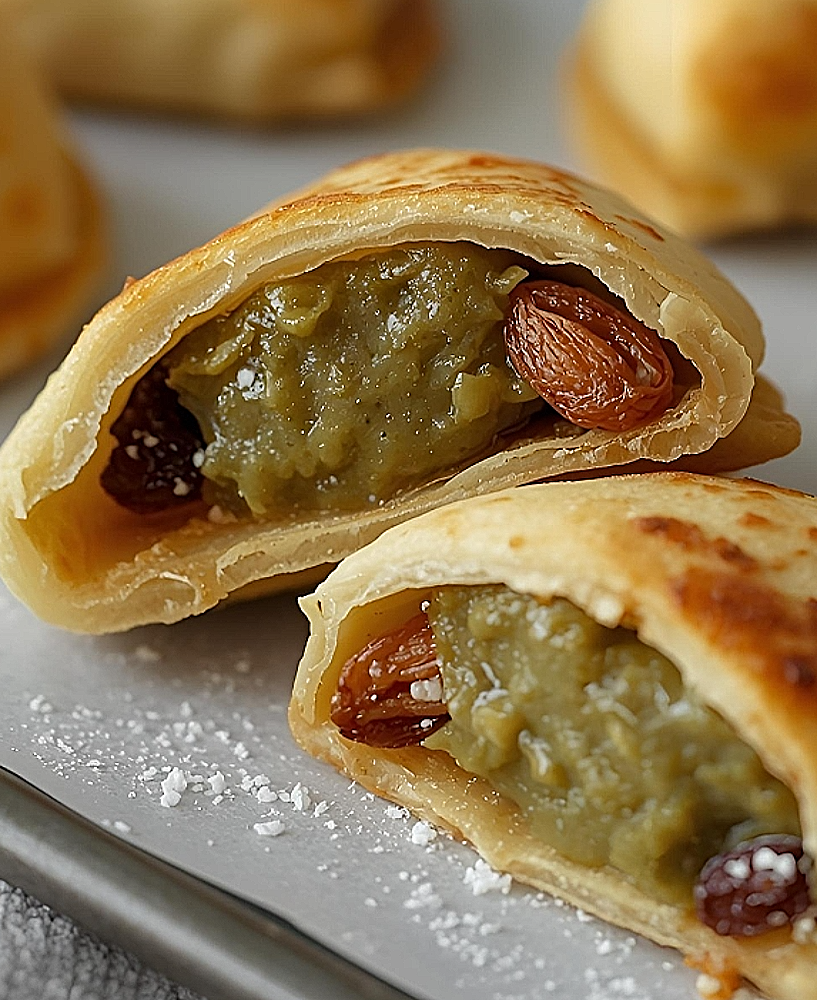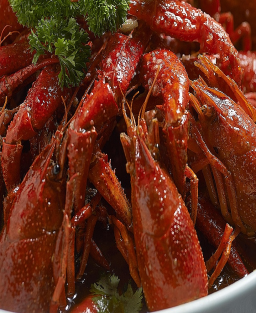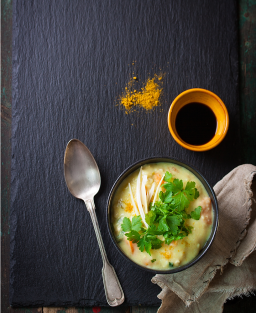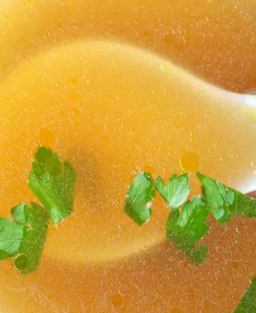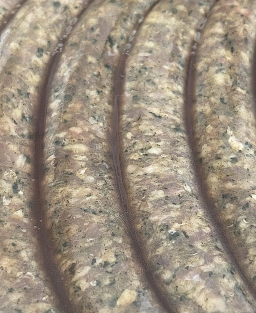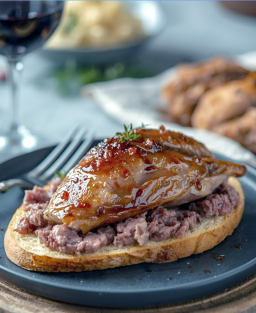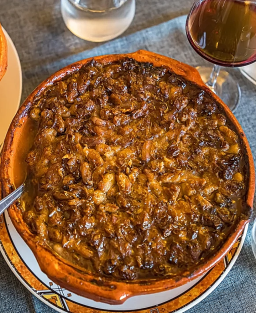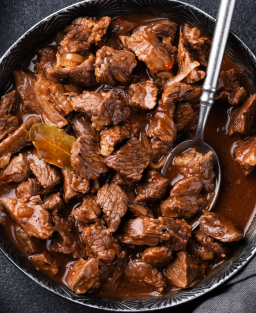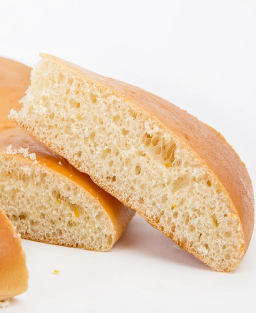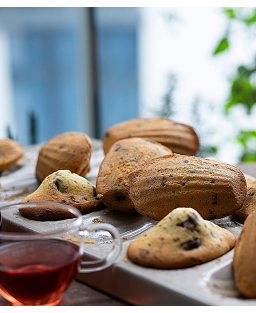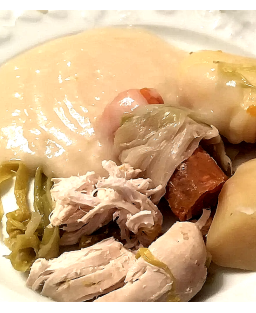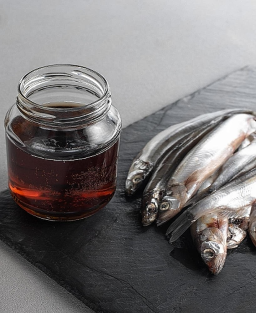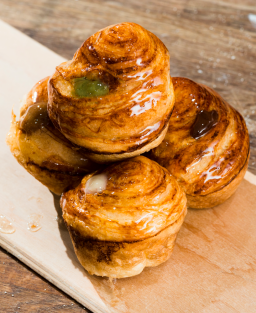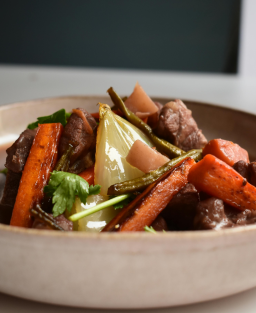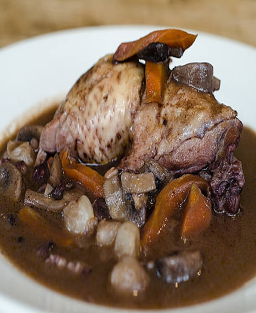Traditional Recipe of Qatayef Layla wa Qays (قطايف ليلى وقيس) – Desert Sweets and Eternal Love of Arab Lovers
Traditional Recipe of Qatayef Layla wa Qays (قطايف ليلى وقيس) – Desert Sweets and Eternal Love of Arab Lovers
Anecdote (Classical Arabic / Arabic)
قالت ليلى: "يا قيس، لو يعلم الرمل ما في قلبي، لبكى معي حتى آخر الليل"
("Oh Qays, if the sand knew what is in my heart, it would cry with me until the end of the night.")
Legend
Layla and Qays, children of the same clan, fell deeply in love from their youth. Layla’s father rejected their union, deeming Qays unworthy of his daughter. Heartbroken, Qays fled into the desert, wandering while reciting verses in homage to his lost love.
Every night during Ramadan, Layla, secluded behind the walls of the harem, secretly prepared delicate qatayef, golden pancakes filled with sweet cream and honey. She placed them on the warm desert sand, believing the wind would carry their fragrance to Qays’s soul.
From this offering of love, an eternal legend was born—the “Romeo and Juliet of the Desert”—that moved poets and storytellers throughout the Arab world for centuries.
الأسطورة
ليلى وقيس، وُلدا في القبيلة نفسها، ووقعا في حبٍّ عميق منذ الصِّبا. رفض والد ليلى هذا الزواج، معتبرًا قيسًا غير جدير بابنته. فغادر قيس إلى الصحراء هائمًا، ينشد أشعار العشق والحنين حتى جفّ صوته.
وفي كل ليلة من ليالي رمضان، كانت ليلى، المحبوسة في بيتها، تُعدّ في الخفاء القطايف الصغيرة المحشوة بالقشطة والعسل، وتضعها على رمال الصحراء كقربانٍ لروح حبيبها المفقود، لعلّ النسيم يحمل عبيرها إليه.
ومن هذا الحبّ الممنوع وذاك الحنين الأبدي، وُلدت أسطورة «روميو وجولييت الصحراء» التي أبكت الشعراء والرواة على مرّ العصور.
Meta-description
Discover the traditional recipe of Qatayef Layla wa Qays, an Arab world pastry linked to the most tragic love story.
Country / Region
-
Country: Arab world (Umayyad origins)
-
Region: Arabian Peninsula – later spread to the Levant and Egypt
-
Recipe Evolution:
During the Umayyad period, qatayef were fried and drizzled with pure honey. Later, they were filled with soft cheese, nuts, or milk cream (ashta). Modern versions are sometimes baked and soaked in orange blossom-scented syrup.
History
Qatayef (قطايف) are documented from the 7th century in Umayyad banquets in Damascus, prepared during Ramadan to symbolize sweetness after fasting. According to Ibn Sayyar al-Warraq, author of the oldest known Arabic cookbook (Kitab al-Ṭabīkh), qatayef were a refined delicacy reserved for the court before becoming popular throughout the Muslim world.
Over the centuries, the recipe adapted: Syrian and Lebanese versions use ashta cream, Egyptian versions prefer nuts and rose syrup, and in Andalusia, it was introduced as al-qataïf, influencing Iberian desserts.
Three iconic chefs:
-
Ibn Sayyar al-Warraq – ابن سيّار الورّاق (10th century – القرن العاشر الميلادي): first written mention of qatayef in the Kitab al-Ṭabīkh, a culinary treatise of the Abbasid era.
-
Chef Osman Al-Tayyar – الطاهي عثمان الطيّار (16th century – القرن السادس عشر، Damascus): codified leavened dough and frying in sesame oil, established in the kitchens of Damascus.
-
Chef Manal Al Alem – الشيف منال العالم (21st century – القرن الحادي والعشرون، Jordan): modernized presentation and fillings with pistachio and cream, keeping the spirit of Ramadan.
Recipe Description
Qatayef are small leavened pancakes, cooked on one side, filled with cream or nuts, and folded into half-moons. Fried or baked, they are soaked in honey and orange blossom syrup. Texture: soft and tender on one side, golden and crisp on the other.
Ingredients (for 20 qatayef)
-
250 g soft wheat flour (T45)
-
25 g fine semolina
-
1 tbsp sugar
-
1/2 tsp dry yeast
-
1/2 tsp baking powder
-
400 ml warm water
-
Pinch of salt
Ashta cream (filling)
-
500 ml whole milk
-
2 tbsp cornstarch
-
1 tbsp sugar
-
1 tbsp orange blossom water
Syrup
-
200 g sugar
-
120 ml water
-
1 tsp lemon juice
-
1 tbsp rose water
Decoration
-
Chopped pistachios
-
Drizzle of honey
Professional Preparation
1. Qatayef batter
Mix flour, semolina, sugar, dry yeast, and baking powder. Gradually add warm water, mix until smooth batter forms. Let rest 30 min at 35 °C (proofing chamber or oven).
2. Cooking
Pour 2 tbsp batter per qatayef on a hot griddle or non-stick pan. Cook on one side only until bubbles form and surface dries. Cool on a rack.
3. Ashta filling
Dissolve cornstarch in a little cold milk. Heat remaining milk with sugar, add cornstarch, cook over low heat until thickened. Add orange blossom water. Cool.
4. Assembly
Place a spoonful of ashta in the center of each pancake. Fold edges into a half-moon, pressing lightly.
5. Frying (optional)
Immerse qatayef in oil at 170 °C until golden. Drain, then dip in warm syrup for 30 seconds.
Regional Variations
-
Lebanon / Syria: walnut and cinnamon filling
-
Egypt: rose syrup and date honey
-
Morocco: thinner dough, baked
-
Modern version: open qatayef with whipped cream and pistachios
Tips and Tricks
-
Cook over medium heat: too high prevents even bubble formation
-
If batter is too thick, add a little warm water to adjust consistency
-
Drain fried qatayef on absorbent paper before syrup to avoid excess sugar
Serving
Serve warm on a copper tray or porcelain plate, sprinkled with pistachios. Gastronomic presentation: stack vertically alternating ashta and reduced orange blossom honey syrup.
Recommended Drinks
-
Traditional: mint tea or Arabic coffee with cardamom
-
Modern: Lebanese natural sweet wine (Musar Jeune Blanc) or almond liqueur
Nutrition (per 2 pieces)
-
Energy: 320 kcal (1340 kJ)
-
Fat: 9 g
-
Carbohydrates: 55 g
-
Protein: 6 g
-
Fiber: 1.8 g
-
Allergens: gluten, lactose
-
Adaptations: gluten-free with rice flour, vegan with almond milk and coconut cream
Glossary / معجم المصطلحات
Ashta – أشطة:
Soft curdled milk cream, Arabic equivalent of clotted cream.
كريمة حليب متخثرة ناعمة المذاق، تُستخدم في الحلويات العربية وتُشبه الكريمة السميكة الإنجليزية.
Qatayef – قطايف:
Leavened pancake with bubbles, cooked on one side, typical during Ramadan.
فطيرة رقيقة تُطهى على وجه واحد فقط حتى تظهر فيها الفقاعات، تُحشى بالقشطة أو بالمكسرات وتُقدَّم في شهر رمضان.
Orange blossom water – ماء زهر البرتقال:
Distillate of bitter orange flowers, used in Arabic pastries and syrups.
مستخلص عطري من زهر شجرة النارنج (البرتقال المر)، يُستعمل في الحلويات والشراب لإضفاء نكهة زكية.
Oil at 170 °C – زيت بدرجة حرارة 170 مئوية:
Ideal temperature for golden frying without excess oil absorption.
درجة الحرارة المثالية لقلي الحلويات حتى تكتسب لونًا ذهبيًا دون امتصاص زائد للزيت.
Sugar syrup – شراب السكر:
Mixture of water and sugar boiled, sometimes flavored with rose or orange blossom.
مزيج من الماء والسكر يُغلى حتى يصبح كثيفًا قليلًا، ويُعطَّر أحيانًا بماء الورد أو ماء الزهر.







